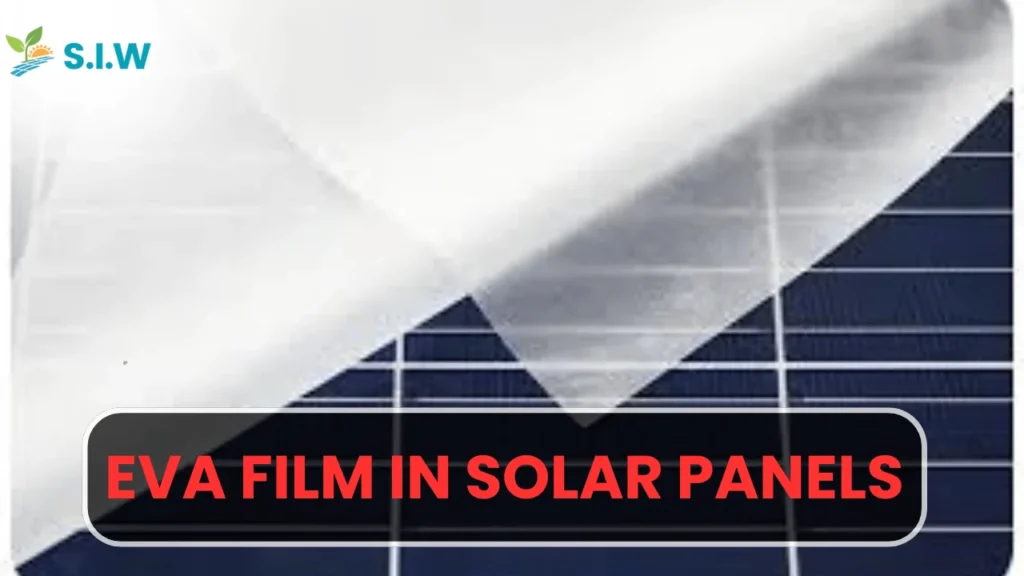Suppose you have a solar panel on your roof, capturing sunlight and converting it into energy for your home. What you may not know is that a key part of this setup is EVA film, or Ethylene Vinyl Acetate film. This special film is essential for protecting the delicate solar cells inside the panel. It shields them from moisture, dust, and damage, ensuring that the solar panel functions effectively and lasts for many years. In this article, we’ll look at what EVA film is, how it works, and why it’s so critical for any solar panel’s performance and longevity.
The Purpose of EVA Film in Solar Panels
Protection for Solar Cells
Solar panels consist of small, fragile cells that turn sunlight into electricity. Without EVA film, these cells would be vulnerable to moisture, dust, and environmental damage. EVA film acts like a shield, covering the cells on both sides to keep them safe. This protection helps panels remain efficient for a long time, even when exposed to rain, snow, and strong sunlight.
How EVA Film Increases Solar Panel Lifespan
EVA film helps extend the lifespan of solar panels by protecting them from both environmental and internal stresses. It’s like a durable cover for a smartphone, guarding against scratches and drops. According to the National Renewable Energy Laboratory (NREL), high-quality EVA films can allow solar panels to last over 20 years, even in harsh conditions.
How EVA Film is Made
The Material Behind EVA Film
EVA film is made from a special blend of ethylene and vinyl acetate, which makes it both durable and flexible. These materials are polymers, meaning they consist of long chains of molecules that give the film its protective and elastic properties. This allows the film to protect the cells effectively while remaining flexible.
Manufacturing Process of EVA Film
In solar panel production, EVA film is layered over the solar cells on both the front and back sides. This process takes place in a clean room to avoid dust and particles. The panel is then heated and pressed, bonding the film tightly to the cells. Energy.gov describes this lamination process as essential for keeping solar cells secure and ensuring that the panel remains stable over time.
The Role of EVA Film in Extreme Conditions
Temperature Resistance
One of EVA film’s key benefits is its ability to withstand a wide range of temperatures. It maintains its protective properties, whether in extreme heat or freezing cold. Temperature changes can cause materials to expand or contract, which might damage unprotected solar cells. EVA film absorbs these changes without cracking, keeping the cells intact.
Moisture and UV Protection
EVA film also acts as a barrier against moisture, which can damage solar cells over time. Additionally, it blocks UV rays, which can degrade materials with long-term exposure. The Solar Energy Industries Association (SEIA) notes that UV protection in solar panels is critical for longevity, as it prevents panels from yellowing and becoming less effective.
EVA Film: A Real-Life Perspective
Why I Chose Solar Panels with EVA Film
When I decided to install solar panels on my home, I wanted a system that would last and perform well, even with changing weather. I learned that high-quality EVA film in solar panels adds durability, making them more resistant to environmental factors. Choosing panels with EVA film gave me confidence that I wouldn’t need to replace them any time soon.
The Downsides of Low-Quality EVA Film
Low-quality EVA film can degrade faster, turning yellow and reducing its protective abilities. This discoloration can block sunlight from reaching the cells, lowering efficiency. In some cases, poor EVA film can lead to “delamination,” where the film separates from the cells, exposing them to possible damage.
How to Identify High-Quality EVA Film
When purchasing solar panels, look for those from reputable manufacturers who use high-quality EVA film. Quality EVA film ensures durability and provides peace of mind that your investment in solar energy will last.
Comparing EVA Film with Other Encapsulants
EVA vs. PVB (Polyvinyl Butyral)
Some solar panels use PVB instead of EVA, which is also durable but generally more expensive and less flexible. EVA is the preferred choice in the industry due to its balance of protection, flexibility, and affordability.
EVA vs. TPO (Thermoplastic Polyolefin)
Another alternative to EVA is TPO, which offers strength but lacks EVA’s adhesive qualities, making it harder to bond with the cells. According to NREL research, EVA remains the top choice for encapsulation due to its versatility and reliability.
Final Thoughts
EVA film is an essential component of solar panels, providing lasting protection for the cells against environmental factors like moisture, UV rays, and extreme temperatures. This reliable film helps extend the lifespan of solar panels, ensuring they perform efficiently for years. Choosing solar panels with high-quality EVA film means investing in durability and long-term energy efficiency for your home or business.
If you’re considering solar panels and want to know more about options with premium EVA film, feel free to get a quote for expert guidance on finding the right solution.
FAQs
- What is EVA film, and why is it used in solar panels?
EVA film is a protective layer that shields solar cells from moisture, dust, and UV rays, enhancing durability. - How does EVA film impact a solar panel’s lifespan?
By protecting solar cells, EVA film helps panels last over 20 years with minimal efficiency loss. - Can EVA film be affected by extreme weather?
EVA film resists temperature changes, providing stable protection in various climates. - Why might EVA film turn yellow over time?
Low-quality EVA film may degrade and turn yellow, reducing efficiency by blocking sunlight. - Are there alternatives to EVA film in solar panels?
Yes, alternatives like PVB and TPO exist, but EVA remains popular for its balance of protection and affordability.








